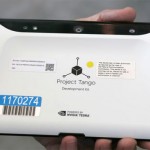
What is the Project Tango?
As we walk through our daily lives, we use visual cues to navigate and understand the world around us. We observe the size and shape of objects and rooms, and we learn their position and layout almost effortlessly over time. This awareness of space and motion is fundamental to the way we interact with our environment and each other. We are physical beings that live in a 3D world. Yet, our mobile devices assume that physical world ends at the boundaries of the screen.
The goal of Project Tango is to give mobile devices a human-scale understanding of space and motion.
The Google team has been working with universities, research labs, and industrial partners spanning nine countries around the world to build on the last decade of research in robotics and computer vision, concentrating that technology into a unique mobile device. They are putting early prototypes into the hands of developers that can imagine the possibilities and help bring those ideas into reality.
3D motion and depth sensing
Project Tango devices contain customized hardware and software designed to track the full 3D motion of the device, while simultaneously creating a map of the environment. These sensors allow the device to make over a quarter million 3D measurements every second, updating its position and orientation in real-time, combining that data into a single 3D model of the space around you.
They run Android and include development APIs to provide position, orientation, and depth data to standard Android applications written in Java, C/C++, as well as the Unity Game Engine. These early prototypes, algorithms, and APIs are still in active development. So, these experimental devices are intended only for the adventurous and are not a final shipping product.
What could we do with it?
You could capture the dimensions of your home simply by walking around with your phone before you went furniture shopping. What if you never again found yourself lost in a new building? You could also search for a product and see where the exact shelf is located in a super-store.
Google is already working with LG to put the technology in a consumer device sometime later this year, and taking it out of Advanced Technology and Projects (ATAP). It’s Google’s way of saying that it’s serious about Tango, and that it’s one step closer to being in your next phone or tablet.
Source: Www.google.com